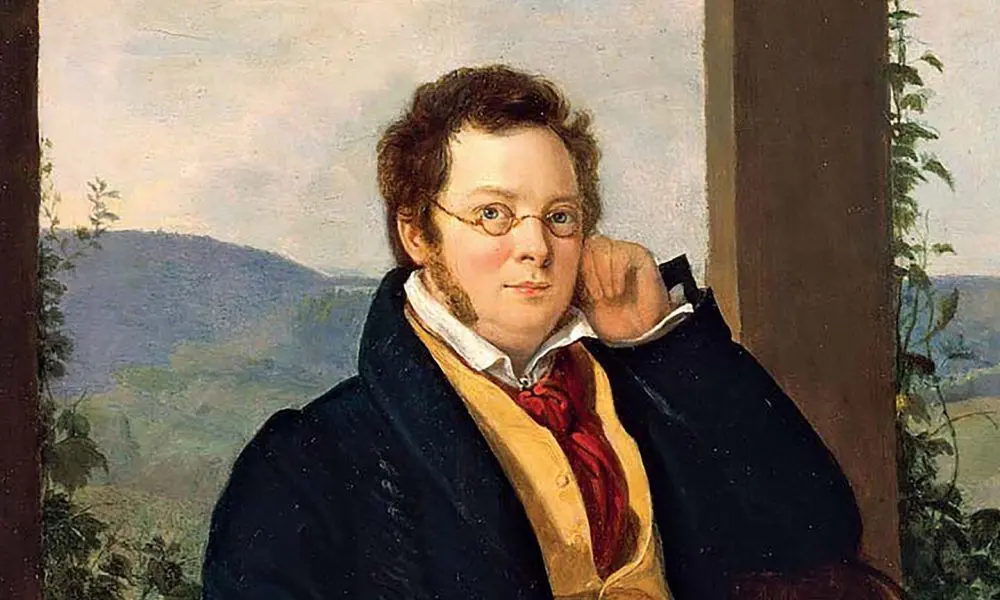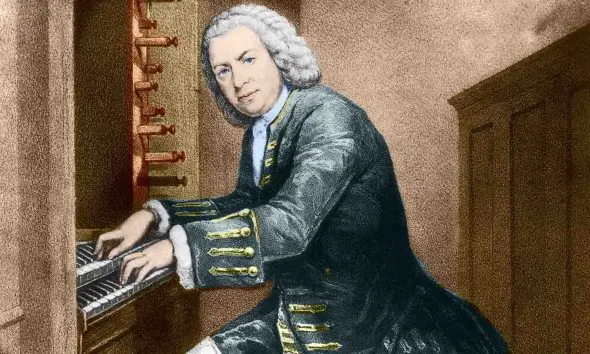Best Schubert Works: 10 Essential Pieces By The Great Composer
Schubert was one of the greatest composers of the early Romantic era – discover our selection of the best Schubert works.

Described by Liszt as “the most poetic of composers,” Franz Schubert became the quintessential composer of the early Romantic period. He composed prolifically, writing music in almost all of the major genres, and his songs set a standard that was unsurpassed for more than a century. His was a short, brilliant life, spent almost entirely in the city of Vienna. His early death, at the age of 31, inspired a welter of sentimental myths. An image of a happy-go-lucky bohemian lingered well into the twentieth century. The truth was darker and more complex.
In his lifetime, Schubert was known for his songs, part-songs and shorter piano pieces. The discovery of his wider output began in 1839, when Robert Schumann came across the manuscript of the ‘Great’ C Major Symphony, then unperformed. In the 1860s further orchestral masterpieces such as the ‘Unfinished’ Symphony and the C Major String Quintet received their premieres. Though chamber works like the ‘Trout’ Quintet, the Octet and the B Flat Piano Trio radiate charm and cordiality, the A Minor Sonata, the Winterreise song–cycle, and the ‘Death And The Maiden’ String Quartet vividly illustrate the composer’s tendency to depression and despair. During Schubert’s short lifetime, appreciation of his music was limited to a relatively small circle of admirers in Vienna. However, after his death, his works were championed by a number of prominent German and French Romantic composers, and he became recognized as one of the greatest composers of Western classical music.
Listen to the best of Schubert on Apple Music and Spotify.
Piano Quintet In A, D667 – ‘Trout’ Quintet
Schubert is at his most buoyant and delightful in his ‘Trout’ Quintet, one of his best works. By adding a double bass to the piano quartet, he not only underpinned his rhythms with a bounce, but liberated the cello as a lyric tenor: no one before or since has matched his achievement with these forces. A spacious opening unfolds into a breezy divertimento, the piano’s silken arpeggios and trills intensifying into the cello’s melody, followed by a serenade that explodes into a scherzo. Then we’re transported to Upper Austria’s “unimaginably beautiful scenery” (Schubert’s own description) for variations on the song melody of Die Forelle (The Trout), which scintillates in sparkling waters.
Symphony No.8 In B minor, D759 – ‘Unfinished’ Symphony
Schubert’s early symphonies are breezy and Classical, barely hinting at the indelible voice of the mature composer. In the ‘Unfinished,’ though, he takes up where Beethoven left off in the ‘Pastoral’ Symphony, opening out visionary new vistas that will lead to the great Romantic symphonies. Though only two complete movements remain (both, oddly, in three-time), they complement each other in some mysterious way, and the perfection of the lyric writing has ensured it a permanent place in the concert repertoire.
Die Schöne Müllerin, D795
The poet Wilhelm Müller’s cycle of poems about a lovelorn apprentice and the fair maid at the mill is, on the surface, a traditional tale of unrequited love. With its springtime optimism fusing with the flowing stream and the rhythms of the turning mill and the young lover’s beating heart, this cycle contains music of vital loveliness. And yet, Schubert composed much of it in hospital, having just been diagnosed with syphilis. How innocent and how unstable is our miller? What depths is he facing? This is a work that rewards an infinite number of interpretations, from fresh naivety to careworn despair.
String Quartet No.14 In D Minor, D810 – ‘Death And The Maiden’
All Schubert’s quartets are exceptional, from the achingly beautiful Rosamunde to the short, sharp, one-movement Quartettsatz. But perhaps none achieve the absolute marriage of song and chamber music as Death And The Maiden – a work that opens with killer blows and never lets up. The heart-breaking variations are on his song-setting of these chilling lines from Matthias Claudius’s poem Der Tod Und Das Mädchen: “Be of good cheer! I am not cruel, quietly shall you sleep within my arms.” The music clings to a single, keening pitch in a funeral tread and hardly dares move from it. After the demonic scherzo, Death departs at a ghostly gallop in one of Schubert’s best works.
Impromptus, Op.90, D899 and Op.142, D935
These delightful piano works make for a good first encounter with Schubert. Immaculately proportioned, brilliantly characterized, and contrasted, they appear to be an effortless outpouring of pure genius. From the first melancholy march in C minor, which melts into song, to the irresistible moto perpetuo in E flat, to the somber dances in F minor (D935) – the consoling hymn that propels the Allegretto in A flat to the explosive fury of the Allegro scherzando – each piece explores its themes with an apparently freewheeling spontaneity that masks a master’s skill.
Symphony No.9, D944 – ‘The Great’
If Schubert broke new ground in his ‘Unfinished’ symphony, in the almost hour-long ‘Great,’ he created a large-scale symphony of sustained power. Incredibly, it only came to light in 1839 when his brother Ferdinand Schubert gave it to Schumann, who promptly took it back to Leipzig, where Mendelssohn conducted the first performance – and even then, it took years for performers to accept its apparently relentless demands. Opening with horn calls and expansive chorales that seem to prefigure late Brahms, and ending with a tour de force worthy of Bruckner, this majestic work confirms Schubert as one of the great symphonists.
String Quintet in C, D956
This Quintet has been featured on Desert Island Discs more than all other works of chamber music, perhaps because it seems to be a distillation of what it means to be human. Written in the last months of Schubert’s life, it glides into being as if it had always been there, heaven-sent. No sooner than its radiant double cello melody is unfurled, a shadow falls: has C major ever expressed such anguish? Time almost stands still in the massive slow movement, which seems to hover between life and death. The leaping scherzo offers hope, and the brusque, dancing finale ushers in cheerful bonhomie, but Schubert twists the knife one final time in the very last bars.
Piano Trio No.2 In E Flat Major, Op.100, D929
This has become one of Schubert’s best-loved chamber works, with its intensely beautiful slow movement and sense of Beethovenian grandeur and heft. It opens with an epic ‘Andante’ in which a song-like question is transformed by a response in the major. The slow movement features the famous, long-breathed Swedish folksong ‘See, The Sun is Sinking,’ heard over hypnotic repeated chords. It’s been used movingly in so many films, from Stanley Kubrick’s Barry Lyndon, to Crimson Tide and The Piano Teacher. A lively ornamented finale appears to be an almost comically ‘proper’ stately-dance rondo, but it is interrupted by outbursts of virtuosity. The Swedish song returns as if a window has been opened onto the memory of innocence.
Piano Sonata No.21 In B Flat Major, D960
Schubert never lived long enough to hear his last piano sonata performed, but we shouldn’t forget that he wrote this celestial meditation as a young man of 30, unaware of quite how close he was to death (from typhoid, and possibly the effects of syphilis). It was Schumann who recognized that the ‘heavenly length’ of these late works was no compositional weakness, but rather the key to their power. Opening with an introspective first movement that quietly interweaves three sensuously lyrical themes, the heart of the Sonata lies in its intensely slow movement. A balletic scherzo breaks the spell most delightfully, leading to a dancing, Hungarian-inflected rondo finale.
Winterreise, D911
Schubert was correcting proofs of his extraordinary Winter Journey on his deathbed. And what a journey it is. The poet Müller’s ‘wanderer’ is modern man, locked in icy isolation and tormented by the memory of love, with nothing before him but death or the loss of reason. Schubert’s friend Joseph von Spaun recalled how Schubert introduced them: “I will sing a cycle of spine-chilling songs to you …They have affected me more than has ever been the case with other songs.” From the gentle nostalgia of ‘The Linden Tree’ to the heartbreak of ‘A Dream of Springtime’ to the hypnotic and harrowing ‘The Hurdy-Gurdy Man,’ surely this is Schubert’s greatest masterpiece.
Discover more of our articles collecting the best works of composers through the ages.







damian101
March 29, 2021 at 10:24 pm
On of my favorite pieces of Schubert isn’t on this list, “Der Erlkönig” (D328).